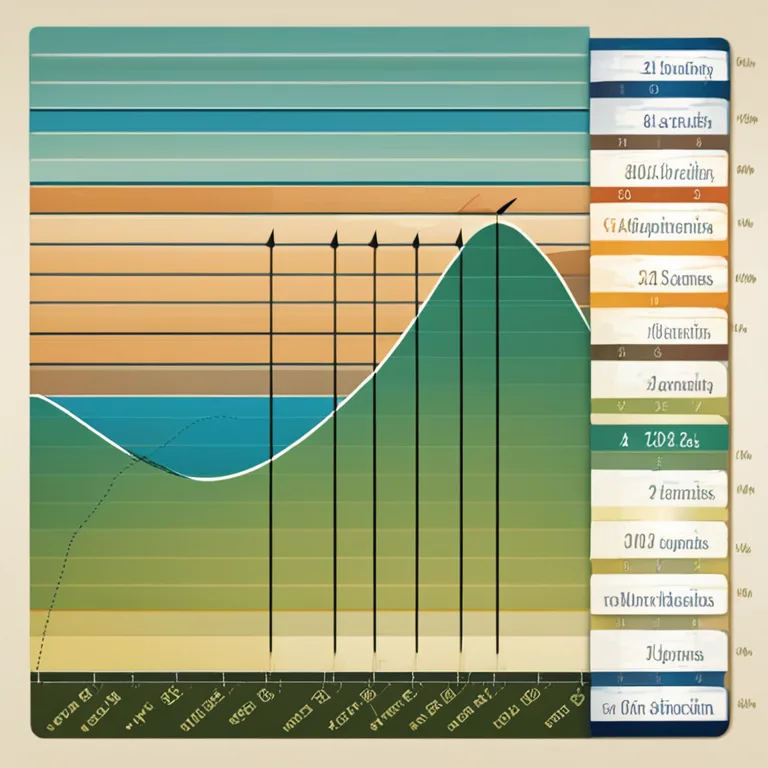
The Interplay of Biorhythms in Psychological Well-Being
Delve into the intriguing world of biorhythms and their impact on mental health and daily functioning, where cycles of physical, emotional and intellectual energies intertwine.
article by Adrian Wallace
The Essence of Biorhythms
Understanding biorhythms starts with recognizing their basic premise: that human life is influenced by natural physiological cycles. These rhythms are believed to affect our physical, emotional, and intellectual states. As we journey through life, it is thought that being in tune with these patterns can enhance our psychological wellness. The concept took root in the early 20th century, and although it is not universally accepted in the scientific community, it continues to intrigue many looking for a holistic approach to well-being.

Physical Biorhythm Insights
The physical biorhythm, typically a 23-day cycle, governs aspects such as endurance, coordination, and strength. When this cycle is at its peak, one might feel at their optimal health and vitality. Conversely, during its low phase, physical resilience may wane, and one might be more prone to illness or fatigue. Acknowledging the undulating nature of this cycle could assist in personal health management and activity planning in our fast-paced world.

Emotional Biorhythm Cycles
Following a 28-day cycle, the emotional biorhythm oscillates through highs and lows that influence our mood and sensitivity. During its positive swings, individuals might find themselves more cheerful and emotionally stable, while the opposite phase can lead to a period of increased emotional unrest or anxiety. Awareness of one's emotional biorhythm could be a tool for better emotional regulation and relationship management.

Intellectual Biorhythm Patterns
The intellectual biorhythm, with a 33-day cycle, is thought to affect cognitive functions such as analysis, logic, and planning. When the cycle is at its apex, mental acuity is presumed to be heightened, making it an opportune time for tasks requiring sharp thinking. When low, one might find it harder to concentrate and solve complex problems. Mapping out this cycle may offer a strategic edge in professional and academic endeavors.

Synchronizing Biorhythms and Lifestyle
In applying biorhythmic principles, it's suggested that synchronizing one's lifestyle to these cycles can improve overall psychological health. By planning for periods of high-energy and allowing for recovery during lows, individuals may optimize their routines for success and satisfaction. Furthermore, the intersection of these cycles can define periods of harmony or conflict, guiding us in personal decision-making and stress management.
Critical Views on Biorhythm Theory
It's important to note that biorhythms are not without their critics. The scientific community has offered skepticism, pointing to a lack of empirical evidence supporting the theory. Critics argue that the concept is too simplistic and fails to account for the complexities of human biology and psychology. Nevertheless, biorhythms endure in the realm of alternative wellness approaches, offering a different perspective on how we understand our bodies and minds.
Embracing Biorhythms in the Future
As we advance into 2024 and beyond, technology might play a crucial role in personalizing biorhythmic analyses. With wearable tech and smart applications evolving, real-time tracking and predictions related to individual biorhythms might become commonplace, potentially paving the way for more research and acceptance within psychological practices.
Published: 12/28/2023
Modified: 12/28/2023
More predictions
Come back here soon to learn more about yourself and your future


Unlocking Biorhythm Calculations
Learn the ins and outs of measuring your biorhythms to align with your natural energy cycles for enhanced well-being and decision-making.


Biorhythm: The Significance of Compatibility
Discover the significance of biorhythm compatibility in relationships and how syncing life cycles can impact partnership dynamics.


The Origins of Biorhythm Theory Explored
Discover the historical and scientific roots of biorhythm theory, the concept that seeks to predict personal cycles of health, emotion, and intellect.